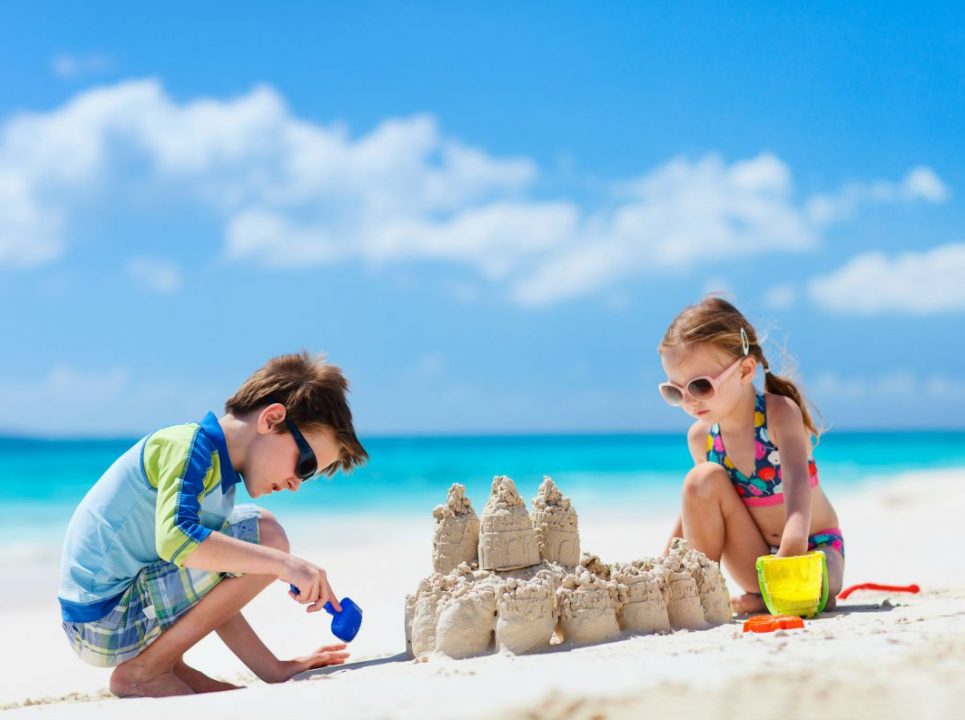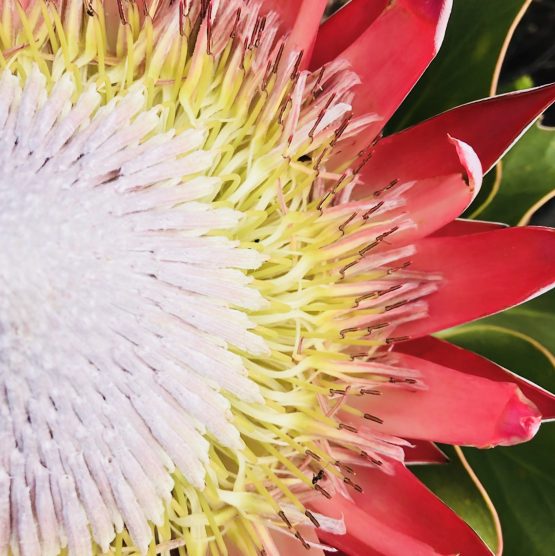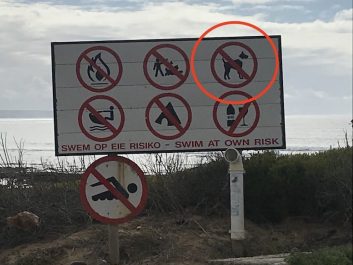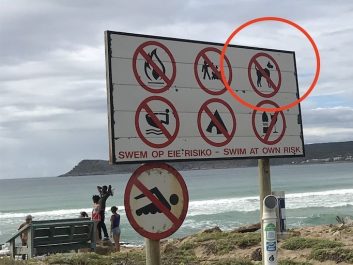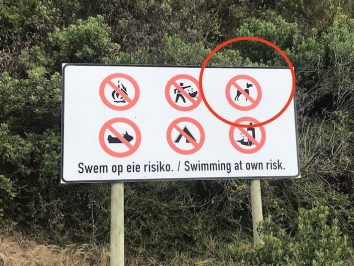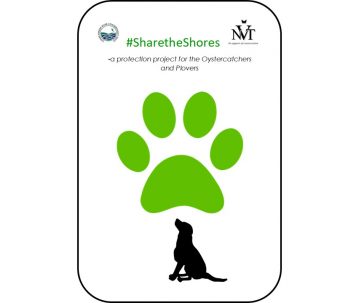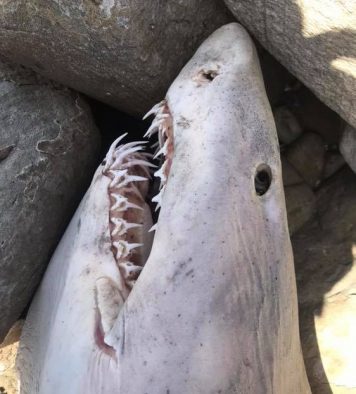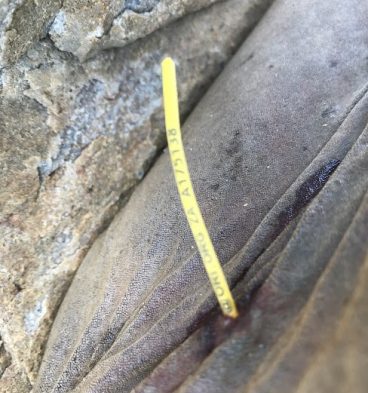RiverWise
Issue 8 ~ November 2018
The monthly newsletter of the Lower Breede River Conservancy Trust.
December Holiday Programme
Come participate in our holiday activities for both Witsand / Port Beaufort and Infanta!
Witsand / Port Beaufort schedule
Infanta schedule
Watch our Facebook page for more activities!
The Protea
One flower to rule them all
Species of the month:
Beauty of the Cape, The Protea
With all the fires happening, it is interesting to know how fire actually helps fynbos and not many know, but fynbos needs fire to survive. Fynbos is a fire-adapted vegetation that needs regular burning for its survival. Think of it as a regeneration cycle. Many Protea species can be placed in one of two broad groups according to their response to fire: reseeders which are killed by fire,or resprouters survive fire by sprouting from buds protected by thick bark.
In the absence of fire, fynbos species decrease as it is gradually replaced by thicket species. Thriving on infertile soils, fire is the mechanism that recycles precious nutrients from old dead growth back into the soil for other plants in the area to absorb. Fire in fynbos is far from a disaster, it is actually a crucial trigger that resets the fynbos ‘successional clock’ and stimulates the sprouting fynbos plants to grow. It provides the stimulus for dormant seeds (seeds in a plant casing or laying under the soil waiting to be stimulated to grow) to sprout and the opportunity for many types of plants to establish. These plants include annuals (plants that have a yearly life cycle), short-lived perennials (plants that only live for a few years) and bulbs to grow, flower and seed during times where there is plenty of nutrients and sunlight.
What feeds on Proteas?
The flowers are fed at by a range of nectarivorous (any animal that feeds on the nectar of a flower) birds, mainly sunbirds and sugarbirds, including the Orange-breasted Sunbird, Southern Double-collared Sunbird, Malachite Sunbird, and the Cape Sugarbirds. For the birds to reach the nectar, they push their faces and long bills down the flower towards the base, where it attaches to the stem, and their faces get brushed with pollen. This allows for pollination of the protea species as a bird visits different individual flowers while it feeds.
Fynbos complete their short life cycles, returning to the soil as the larger shrubs overwhelm them, and remain dormant until the next fire. The optimal fire cycle for fynbos is between 10-14 years. Shorter fire cycles can wipe out slow maturing species, while species start dying when intervals become too long.
Fact # 1
Proteas date back millions of years, approximately 300 million years, and are considered to be among the oldest families of flowering plants on the planet.
Fact # 2
The protea family is large and diverse. With over 1500 species, proteas come in different shapes and sizes, from shrubs to tall trees. Proteas are also known as sugarbushes, due to the excessive amount of nectar the flowers produce.
Fact # 3
The name “protea” was inspired by Greek mythology. Proteas are named after Proteus, son of Poseidon and a shape-shifter, highlighting the variety of plants found within the large proteaceae family.
Fact # 4
Australia has the greatest diversity of protea species. Although South Africa is associated with proteas more than any other country. Australia has the largest collection of species on the planet—over 850. South Africa comes in at second place, with more than 330 species.
Fact # 5
The king protea (protea cynaroides) took the title of South Africa’s national flower in 1976. The king protea, so called because of its resemblance to a crown, is the largest of all proteas and is found in the Cape Floristic Region. The flower appears on South African birth certificates and passports, as well as on the South African five Rand coin, and the Proteas, South Africa’s cricket team, also took its name from the genus.
Fact # 6
Proteas can survive wildfires. Dormant buds survive the wildfires that so often clear the dry Cape land, only to emerge once the fire has gone out. The plants are, as such, hardy and can withstand the toughest of weather conditions.
#SharetheShores Signs are up!
The signs are up and we are ready for the crowds.
Each sign has a meaning and a reasoning. #SharetheShores was a protection project originally starting in Nature's Valley by Mark and his team at Nature's Valley Trust. The project aims to conserve African Oystercatchers and White-fronted Plovers by minimising the number of human and dog disturbances to the nests. By reducing the number of times the parents get chased off their eggs, the eggs have a greater chance of hatching and reaching maturity. We already have a few pairs identified, ringed and named! We have Rachel and Ross (F164) who have successfully hatched 2 eggs, Adam and Eve (F163) who have hatched one egg, Mac and Cheese who have 2 new arrivals and lastly, Diesel and Bug have 3 eggs on the way!
(The numbers starting with F are the ID numbers on the Black and White rings placed on the left leg of each female.)
Thank you again to Hessequa Municipality for their support, Rotary Club Swellendam for sponsoring funds to get the materials needed and sign boards printed and finally to Natures Valley for their travels, graphics and helping us set up the #SharetheShores project in Witsand.
PLEASE NOTE:
This is an awareness project, not a law enforced by the LBRCT. Follow these guidelines as your conscience dictates. Red zones and areas outside zones depicted below fall under regular beach management laws and restrictions.
#SharetheShores: Information Sign
Because of the potential success of making Witsand and Infanta a safe haven for these birds, the one sign we have put up gives you all the information about the struggles and troubles most beaches and their animal dwellers face. These signs are at Witsand Main Beach, close to the Anchorage Restaurant, and Government Slipway towards the entrances of to the bait beds.
The Zoning Signs
Lastly, we have the signs approved by the municipality that show which beaches are dog friendly, where your fur buddy is able to run wild and free, where your dogs must please stay on a lead, they're allowed to walk there but because the beach is small and there are breeding birds, it is safer for the birds for your dog to remain on the lead and finally a zone where no dogs are allowed at all because of the number of breeding birds and nests we have in a small area.
Water Quality
Fresh? Not so much...
Birder's Guide to the Breede
Nests here, nests there, nests everywhere!
Why not kill two birds with one stone? Figuratively of course. It works out better in the end for everyone. So that's what we did. We first did our water quality run which took us all the way up to the Pont and while skippering down to Witsand, we did our Bird Monitoring Survey. The weather started off great but thanks to mother nature, it slowly turned. We faced winds, clouds and drizzle which is no weather for birds. This is why we didn't see a lot of species but the few we did see were all making nests and displaying for the ladies. Red Bishops, Reed Cormorants, Cape weavers and the White-throated Swallows were all carrying nesting material up stream. We saw a total of 257 birds from 22 species. We usually see a higher number of species along the mudflats from White House until Groenpunt but they were clever enough to escape the weather.
Bird Point Count for November
Litter Accumulation
As the season goes on, more and more people are leaving their winter caves and exploring out in the sun. It is a great time as summer arrives but unfortunately something good can't stay good for too long. I think one of the main reasons why people love summer so much is because they have a break from work and school and get to be outside in the water swimming, on the water fishing, skiing or tubing or simply enjoying sunset walks on the beach. If you read carefully all of these things have one common denominator ... NATURE. All we ask as more and more of you go to the beaches for a tan, swim or to fish, we ask that you please pick up anything lying around or just after yourselves so the beaches stay clean for all to use and less pollution lands in our beloved waters. The beach clean-ups this month show that there are more and more people out there. If we do our bit, then there isn't a lot that has to be done for everyone to enjoy the beauty of the Breede. Things to watch out for on the beaches, fishing line and hooks, bait boxes and plastic packaging and lastly, plastic straws and cool drink bottles. The "Most likely to find" items in our list are related to food and beverages such as bottles, caps, take away containers, straws and grocery/plastic bags.
Our Statistics (%)
"Most likely to find"
Fishing Gear
Other Trash
Tiny Trash
Conservation Stories
Ragged-Tooth Shark Stranding
On Thursday morning, Barry from Infanta gave us a call and said there was a shark stranded on the rocks along the Infanta coast. Oddly enough the shark stranded only spitting distance away from the Great White Shark which stranded beginning of December last year. The shark that stranded was a Ragged-Tooth Shark. Ragged-tooth sharks, also known as grey nurse sharks in Australia and as sand tiger sharks in the USA, occur in temperate to tropical coastal waters of the Atlantic, Indian and western Pacific oceans.
In South Africa they are common along the eastern and southern coasts, occurring as far west as False Bay. Like all sharks, ragged-tooth sharks have a cartilaginous skeleton. They grow to about 3,2m in length and live for about 40 years. They reach sexual maturity after 5 years, and at approximately 2.2m in length.Sharks’ teeth are arranged in rows which continually move slowly forward, like conveyor belts. This ensures a constant supply of sharp, new teeth and results in sharks losing and replacing thousands of teeth in a lifetime.We went up and looked at the shark to record important details for Dyer Island Conservation Trust. We measured the shark her to be 2, 84 meters.
The difference between male and female shark are the lack of presence of the claspers as seen in the image below. We ensured she had her liver fully intact and that there was no damage. Upon opening up the stomach, we saw the she had been feeding on Musselcrackers recently. There was one complete bottom jaw found along with fragments from 2 other Musselcrackers and smaller saltwater fish. The cause of death wasn't obvious so we speculate she was caught and was released incorrectly. She had also been recently tagged which may have caused stressful conditions. The tissue samples, genetic samples and skin samples were sent off to Dyer Island to aid their research.
Thank you for reading
We hope you enjoyed this months' issue. Should you have any feedback, questions, or matters you would like us to cover in a future issue, please do not hesitate to write to us at news@breede-river.org.
